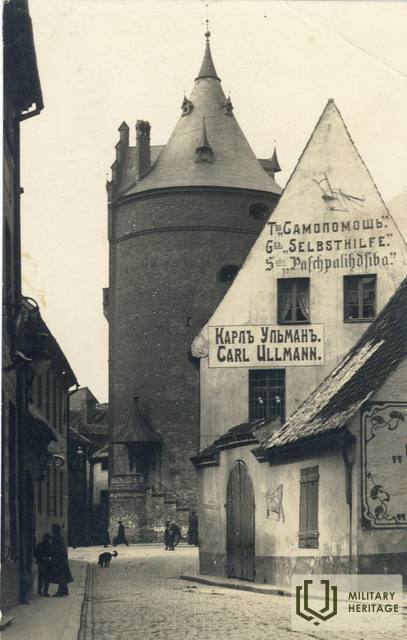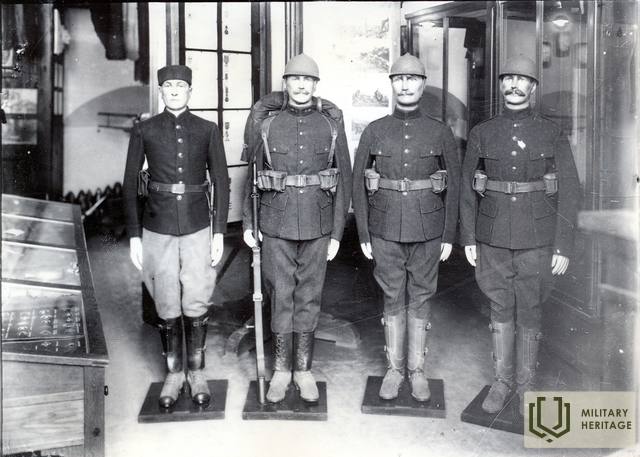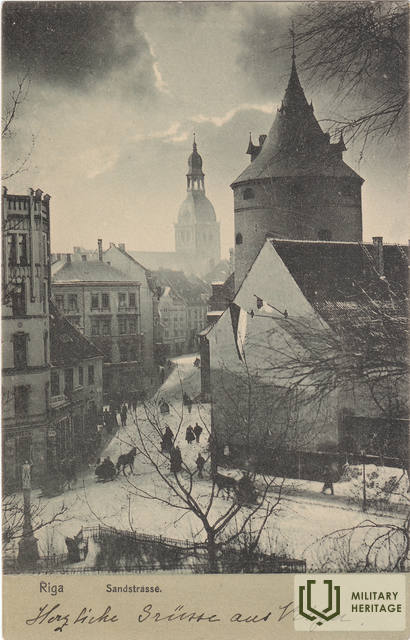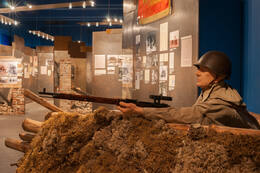Memories of the beginning of the creation of the War Museum
The narrator describes the circumstances under which the War Museum was established. The problems and the work of creating collections are mentioned.
“One of the most urgent tasks of our time is to collect and organize everything that testifies to those years of devastation and war that have turned our homeland into a pile of ruins. The waves of war have flowed like floods and ebbs, and yet it was only from these ruins that a new Latvia was destined to be reborn. Our heroic rifle battalions were the first to bravely stand up as the first combat-ready collective for their land and won our freedom with only weapons in hand. Therefore, before it is too late, we must get back to work and collect all the materials about this era in the War Museum and archives, shedding light on the situation in Latvia before the war, the exodus of Latvians and the lives of refugees, the lives of riflemen and the era of battle, occupation, especially in Courland, Red Latvia and the first steps of the Latvian state. The Latvian War Museum was founded in November 1916, when the Latvian rifle regiments were given permission to collect relevant materials, trophies, etc. At the beginning of 1917, his activities were already well underway, employees were invited and the museum's collections gradually grew. In May 1917, there were about 8,000 items. His activities expanded significantly after he joined the Refugee Support Committee archive, which had accumulated a lot of materials and which, after the destruction of the Moscow Cultural Bureau and the St. Petersburg archives, is now the only collection with documents from the refugee era. In addition to the trophy collection, which contains many German war paraphernalia, there are also extensive other departments. A large part of the published German war literature about the Baltics has been collected and various documents, newspapers, letters, etc. The archive contains complete sets of newspapers published during the war and other printed materials, slogans, posters, regulations, etc. The collection of photographs, which should have flowed into the companies of all our photographers, obituaries of fallen heroes, memoirs of soldiers, diaries of the day books, letters, which characterize the era, etc. There is a section that describes the soldiers' leisure moments - their equipment, aluminum castings, etc. The War Museum has had to overcome various difficulties in recent years. In 1917, it was difficult to transfer trophies directly to the museum, because they had to flow in a general order through divisions, etc. to the Central Trophy Collection in St. Petersburg. The museum was free to receive them, the soldiers were not officially free to transfer them, which caused great inconvenience. During the occupation, the Germans had dug up the collection, but through the care of interested parties, it was put in order. Similarly, during the Bolshevik era, the museum had to be hastily removed from its previous premises, communist committees moved there. However, the energetic actions of the employees managed to preserve it and supplement the collection this time as well. Now the War Museum is starting its activities again with a certain past and collections. The following stages are widely described: 1917 in Riga and Vidzeme until the occupation, the era of refugees and "The times of the Bolsheviks in Latvia. The most urgent need is to replenish the collections on the occupation in Courland, Latvian soldiers in Russia, the life of prisoners in Germany and foreign information during the war. Therefore, we ask all friends of the museum to come and help in this work again, to place at his disposal relevant objects, documents and collections."
"Latvijas Sargs", No. 84. 1919
Related timeline
Related objects
Latvian War Museum
The Latvian War Museum is located in the Old Town not far from the Freedom Monument in a historic defence building called the ‘Powder Tower’. There are 11 exhibits in the museum. There are various weapons, documents, uniforms, awards, badges and other items detailing the everyday life of a soldier in war. The Latvian War Museum is one of the oldest museums in Latvia. Its origins can be found in World War I. Museum’s collection was made up mainly of personal items of soldiers or items found on battlefields. After Latvia gained its independence the main goal of the museum became to create an exposition on the military history of Latvia and the active role of the population in protecting their land. In 1937 the museum was expanded and was technically one of the most modern museums in Europe at that time. The Powder Tower was one of the fortification towers of Riga. Some evidence dates back to 1330 where it has been mentioned as the ‘Sand Tower’. The tower was destroyed in 1621 when Riga was besieged by the Swedish Army. But in 1650 a new tower for storing gunpowder and weapons was built. After the city’s fortifications were taken down, the Powder Tower remains as one of the most important pieces of evidence of the Riga defence system.











